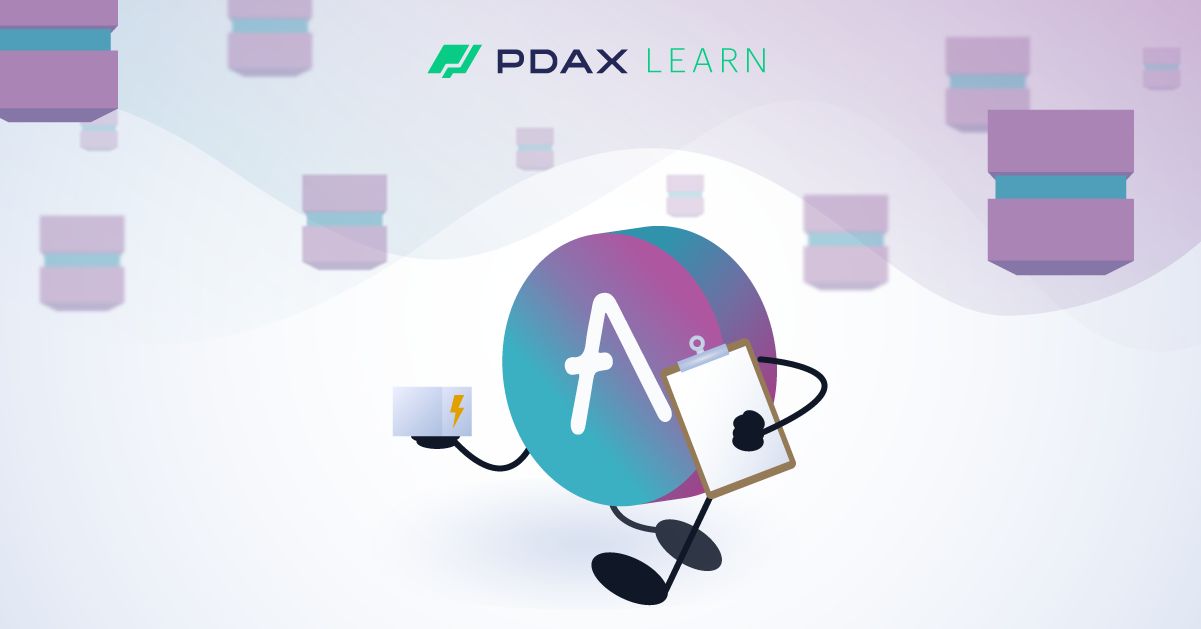After Bitcoin introduced the concept of a decentralized ledger system that requires no third party to run it, it was logical that the next developments would be to take many of our traditional financial instruments such as borrowing and lending–and figure out a way to execute them on a blockchain without having to resort to banks and other financial institutions to create the market.
Thus came the decentralized finance (DeFi) boom along with numerous platforms offering the average person a variety of options to easily access these markets–one of the most popular among them being the Aave network.
Aave (AAVE) is an open-source protocol and decentralized financial marketplace built on the Ethereum blockchain for borrowing and lending crypto assets. Designed to bridge the gap between the traditional financial system and the crypto space, Aave reduces the cost associated with investing in debt instruments by providing an accessible, secure and trustless platform to its users.
How does AAVE work?
Aave enables users to lend their crypto funds to other users and earn interest on their loans. Meanwhile, borrowers can use the platform to borrow funds for a variety of use cases, such as trading, hedging, funding other blockchain projects, and more.
To lend digital assets to Aave, users deposit them into pools after which they receive a corresponding amount of interest-bearing called “aTokens” that represent their share of the pool. Meanwhile, borrowers can borrow from the pool in the form of stable rate loans, variable rate loans, and even flash loans.
Borrowers are also required to provide a collateral in another cryptocurrency to support the loan, ensuring that there will always be enough funds in the pool even if borrowers default on their loans.
Aave also provides users with an array of tools such as risk mitigation features and also supports the use of stablecoins such as USD Coin (USDC) and Dai (DAI) to simplify the usage of the platform.
What is AAVE used for?
AAVE is the native token of the Aave network. AAVE provides a host of utilities which mostly center around providing liquidity to the Aave protocol and incentivizing users to contribute to the protocol:
- AAVE is used to pay for fees on the platform, receive rewards for staking tokens, and access exclusive services such as flash loans.
- AAVE can also be used to get discounts on fees if used as collateral for borrowing funds. Loans that are denominated in AAVE are not charged a fee at all.
- The AAVE token is also used as a governance token for the Aave protocol. Users are able to cast votes to decide on the parameters of the protocol, such as the amount of rewards given to stakers and the interest rates charged by lenders.
What are flash loans?
Aave was the first platform to introduce flash loans, which are loans that are taken out and paid back within a single transaction, and can only be executed thanks to blockchain technology and smart contracts.
Flash loans are basically “instant loans” and are possible because of the way a blockchain handles its data. Transactions in Ethereum for example, are processed in “blocks” which upon validation are then added to the network chain (from which from that point on become immutable). With flash loans, the principal and the interest from a loan have to be repaid by smart contracts within the time it takes to add a block to the network (around 12 to 13 seconds for Ethereum) otherwise the loan will be reversed.
Because flash loans happen in a short amount of time and are automated, the whole process can be done without any collateral and without having to wait for any approval. This type of loan can be used for a variety of purposes that require large amounts of money (even in the millions) and fast executions, such as arbitrage trading and liquidity mining.
Tokenomics
AAVE has a maximum supply of 16 million tokens, of which 14.2 million are currently in circulation as of February 2023.
AAVE was launched as LEND during its initial coin offering with an initial supply of 1.3 billion of which were later redeemable for AAVE on a 1:100 ratio, equating to 13 million AAVE. A further 3 million tokens were allocated for the Aave ecosystem reserve.
The AAVE token is deflationary, which means that its total supply is expected to decrease over time. This is due to its burning mechanism, which removes tokens from the supply with every transaction.
Ready to start with crypto?
Start your trading journey with PDAX.
DISCLAIMER: The statements in this article do not constitute financial advice. PDAX does not guarantee the technical and financial integrity of the digital asset and its ecosystem. Any and all trading involving the digital asset is subject to the user’s risk and discretion and must be done after adequate and in-depth research and analysis.
About PDAX
PDAX is a BSP-licensed exchange where you can trade Bitcoin, Ethereum, and other cryptocurrencies directly using PHP!
Featured Posts
You might also like
MON (Monad) is now on PDAX!
PDAX
December 04, 2025
PDAX Learn: USDC on Arbitrum is now on PDAX
PDAX
December 01, 2025
Pump.fun’s PUMP token is now on PDAX! 🎈
PDAX
November 26, 2025
Aerodrome Finance’s AERO token is now on PDAX!
PDAX
November 12, 2025
